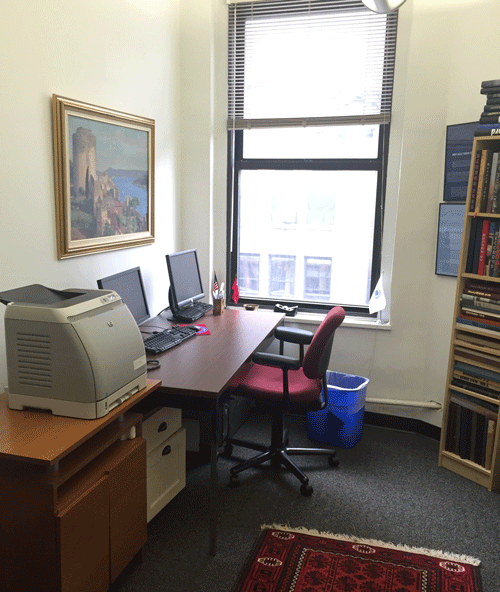[Dummy] Multipurpose page
This is an example of a subheading for an article to be used as needed and this one is a bit long so it wraps onto two lines.
The Ninth Circuit has issued an opinion on a matter of first impression in that circuit: whether a spectator disappointed by a sporting event has legal recourse against the athletes, promoters, and others associated with the event. In accordance with two other circuits and several other cases addressing similar issues, the Ninth Circuit held that such consumers suffered no legally cognizable injury, affirming the district court’s dismissal of the putative class action complaints with prejudice. In re: Pacquiao-Mayweather Boxing Match Pay-Per-View Litigation, No. 17-56366 (Nov. 21, 2019).
This is an example of an H2 heading

The matter arose out of the 2015 boxing match between Manny Pacquiao and Floyd Mayweather. The match was hyped by the media and promoted by HBO as “the biggest event in boxing history,” and “the Fight of the Century.” However, Mr. Pacquiao suffered a torn rotator cuff injury during training several weeks before the fight; this fact was not disclosed to the public. Instead, his promoter, trainer, and manager continued to make statements that Mr. Pacquiao was in great shape and prepared for the fight.
Each athlete was medically cleared to fight by the regulating body, the Nevada State Athletic Commission, prior to the event. The fight went twelve rounds, with the judges awarding Mr. Mayweather the victory by unanimous decision. However, some media outlets described the fight as boring, and after the fight, Mr. Pacquiao revealed publicly that he had not been 100% due to the injury.
Each athlete was medically cleared to fight by the regulating body, the Nevada State Athletic Commission, prior to the event. The fight went twelve rounds, with the judges awarding Mr. Mayweather the victory by unanimous decision. However, some media outlets described the fight as boring, and after the fight, Mr. Pacquiao revealed publicly that he had not been 100% due to the injury.
This is a block quote s awarding Mr. Mayweather the victory by unanimous decision. However, some media outlets described the fight as boring, and after the fight, Mr. Pacquiao revealed publicly t
Each athlete was medically cleared to fight by the regulating body, the Nevada State Athletic Commission, prior to the event. The fight went twelve rounds, with the judges awarding Mr. Mayweather the victory by unanimous decision. However, some media outlets described the fight as boring, and after the fight, Mr. Pacquiao revealed publicly that he had not been 100% due to the injury.
This is a pull quoteThe plaintiffs alleged that all defendants knew of the injury yet failed to disclose it, depriving the plaintiffs of the opportunity to make an informed purchasing decision.
This is an example of an H3 heading

Each athlete was medically cleared to fight by the regulating body, the Nevada State Athletic Commission, prior to the event. The fight went twelve rounds, with the judges awarding Mr. Mayweather the victory by unanimous decision. However, some media outlets described the fight as boring, and after the fight, Mr. Pacquiao revealed publicly that he had not been 100% due to the injury. The plaintiffs brought putative class actions in numerous jurisdictions, primarily focused on consumer fraud allegations, against a variety of defendants. The plaintiffs named a number of people and entities associated with Mr. Pacquiao, including the promoter and his manager. The plaintiffs also named HBO, which had produced a documentary about the fight, as a defendant. Finally, the plaintiffs named Mr. Pacquiao’s opponent, Mr. Mayweather, as well as Mr. Mayweather’s promotions company, Mayweather Promotions, on the grounds that they allegedly had a “mole” in the camp and therefore knew of the injury. The plaintiffs alleged that all defendants knew of the injury yet failed to disclose it, depriving the plaintiffs of the opportunity to make an informed purchasing decision. The plaintiffs contended that they were led to believe that “they were purchasing the right to see a contest between healthy athletes in peak physical condition and not suffering from any disability or serious injury.”
- Here is an example of a bullet list. This is the first option.
- This is the next item in the bullet list.
- Third bullet in the list.
More than 40 putative class actions were consolidated as a Multi-District Litigation (“MDL”), with the Central District of California serving as the transferee court. After motion practice under Rule 12(b)(6), the district court dismissed all complaints with prejudice on the grounds that the plaintiffs suffered no cognizable injury to a legally protected interest. The plaintiffs appealed.
- This is an example of a numbered list. This item is a little bit longer so the text will wrap onto two lines. Lorem ipsum dolor sit amet.
- This is the next item in the numbered list.
- This is the last item in the numbered list.
Lorem ipsum dolor sit amet, consectetur adipiscing elit, sed do eiusmod tempor incididunt ut labore et dolore magna aliqua. Ut enim ad minim veniam, quis nostrud exercitation ullamco laboris nisi ut aliquip ex ea commodo consequat.
Staff Bios
George Freeman is Executive Director of the Media Law Resource Center. He was most recently Of Counsel to the law firm of Jenner & Block. He is a former Assistant General Counsel of the New York Times Company, where he was at the forefront of numerous high-profile cases for the company and its affiliated businesses. George is a well-known speaker on media and First Amendment issues. He is the William J. Brennan Visiting Professor at the Columbia Journalism School and also teaches at New York University and CUNY’s Graduate School of Journalism. He has led or participated in many media groups and is the founder and Co-chair of the American Bar Association’s Forum on Communications Law annual conference. He is a graduate of Amherst and the Harvard Law School.
George Freeman is Executive Director of the Media Law Resource Center. He was most recently Of Counsel to the law firm of Jenner & Block. He is a former Assistant General Counsel of the New York Times Company, where he was at the forefront of numerous high-profile cases for the company and its affiliated businesses. George is a well-known speaker on media and First Amendment issues. He is the William J. Brennan Visiting Professor at the Columbia Journalism School and also teaches at New York University and CUNY’s Graduate School of Journalism. He has led or participated in many media groups and is the founder and Co-chair of the American Bar Association’s Forum on Communications Law annual conference. He is a graduate of Amherst and the Harvard Law School.